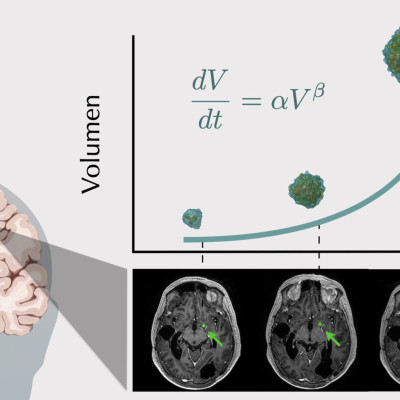Publication
Growth dynamics of brain metastases differentiate radiation necrosis from recurrence
B. Ocaña-Tienda, J. Pérez-Beteta, D. Molina-García, B. Asenjo, A. Ortiz de Mendivil, D. Albillo, LA Pérez-Romasanta, E. González del Portillo, M. Llorente, N. Carballo, E. Arana, Víctor M Pérez-García
Neurooncology Advances 5(1), vdac179 (2023)
MOLAB authors
Abstract
Background
Radiation necrosis (RN) is a frequent adverse event after fractionated stereotactic radiotherapy (FSRT) or single-session stereotactic radiosurgery (SRS) treatment of brain metastases (BMs). It is difficult to distinguish RN from progressive disease (PD) due to their similarities on the magnetic resonance images (MRIs). Previous theoretical studies have hypothesized that RN could have a faster, although transient, growth dynamics after FSRT/SRS, but no study has proven that hypothesis using patient data. Thus, we hypothesized that lesion size time dynamics obtained from growth laws fitted with data from sequential volumetric measurements on MRIs may help in discriminating recurrent BMs from RN events.
Methods
A total of 101 BMs from different institutions, growing after FSRT/SRS (60 PDs and 41 RNs) in 86 patients, displaying growth for at least three consecutive MRI follow-ups were selected for the study from a database of 1031 BMs. The three parameters of the Von Bertalanffy growth law were determined for each BM and used to discriminate statistically PDs from RNs.
Results
Growth exponents in patients with RNs were found to be substantially larger than those of PD, due to the faster, although transient, dynamics of inflammatory processes. Statistically significant differences (p < 0.001) were found between both groups. The ROC curve (AUC = 0.76) supported the ability of the growth law exponent to classify the events.
Conclusions
Growth law exponents obtained from sequential longitudinal MRIs after FSRT/SRS can be used as a complementary tool in the differential diagnosis between RN and PD.















